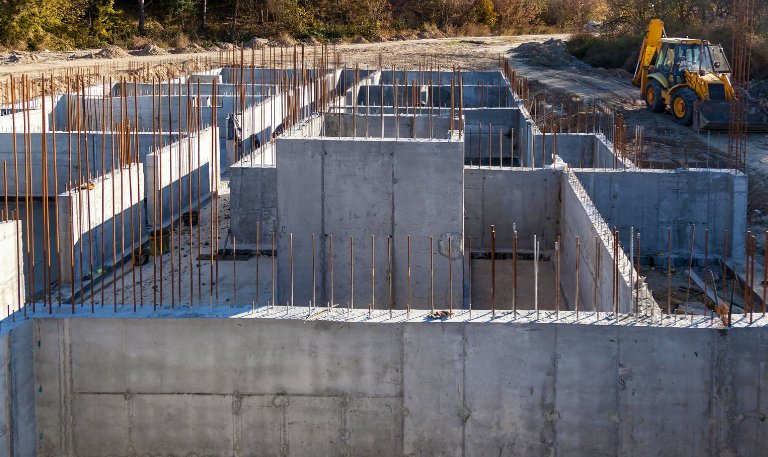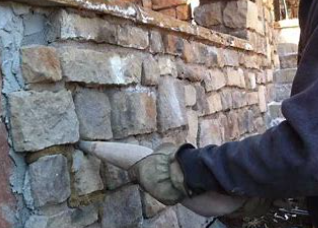What Is A Bond Beam And Its Role In Masonry?
A bond beam is an important structural element in masonry walls. They enhance the stability and strength of a building by providing horizontal reinforcement. While it might seem like a straightforward component, a bond beam is valuable in distributing lateral loads. They help resist shear forces and maintain the structural integrity of masonry walls, especially in areas prone to seismic activity.
Bond beams are used in many different applications, from commercial structures to residential buildings. Their strength and ability to support various types of loads make them indispensable. Be it reinforcing a foundation wall or acting as a structural component at floor connections, bond beams integrate into the larger framework of the building. In this article, we explore what is a bond beam and its function in reinforced masonry construction.
What Is a Bond Beam?
A bond beam is a horizontally reinforced section within a masonry wall. They are made to handle both lateral and vertical forces. These beams are typically formed using 8X8X16 open-bottom bond beam units. These are special masonry blocks with reduced-height crosswebs to accommodate reinforcing bars and grout. Grout is poured into the cavities to surround the rebar to create a continuous bond that ties the wall together and strengthens it against various forces.
Bond beams are most often placed at key points in a structure such as at the top of walls, beneath floor diaphragms, or above openings like windows and doors. The placement of bond beams is important because they serve as a tie element that prevents the walls from flexing or moving under load. In taller structures or those located in seismic zones, intermediate bond beams may also be required to provide additional reinforcement at various levels.
The Roles of Bond Beams in Masonry
The primary role of a bond beam in masonry is to distribute lateral loads evenly across the wall. They help prevent stress concentrations that could lead to cracks or structural failures. Bond beams help transfer shear forces and maintain the overall stability of a masonry wall. This becomes particularly important in areas subjected to seismic activity, where horizontal forces can weaken or collapse unreinforced walls.
Bond beams also contribute to the overall rigidity of the wall. When a bond beam is incorporated into the design, it ties the entire wall section together to act as a single, cohesive unit. This is particularly beneficial in multi-story buildings, where the weight of the upper floors creates additional vertical loads that must be evenly distributed.
Bond beams offer the ideal solution in masonry walls that require enhanced shear resistance. Their horizontal reinforcement works with vertical reinforcement bars to provide a balanced approach to managing lateral and vertical forces. The combination of these two types of reinforcement allows the wall to handle more significant loads while maintaining flexibility and strength.
Crack control is another important role of bond beams in masonry construction. Bond beams help prevent cracking by reinforcing the wall horizontally, thereby distributing stresses more evenly. When a masonry wall experiences shrinkage due to the moisture content of the grout, the horizontal reinforcement in the bond beam counteracts this movement. This helps prevent cracks from forming.
Bond beams are often used in combination with joint reinforcement to manage the movement of masonry walls. However, the area of steel required for bond beams in crack control applications is typically greater than that required for joint reinforcement. This is due to the additional shrinkage caused by the wet grout during construction. This can cause the concrete masonry units to expand initially and shrink as they dry.
Structural Considerations for Bond Beams
The placement and design of bond beams in masonry walls are determined based on the structural requirements of the building. Bond beams are often placed at regular intervals in taller walls or where seismic design requirements dictate the need for additional reinforcement. In most cases, bond beams are located at the top of walls, at each floor level, and at the foundation level.
In structures that are exposed to seismic forces, intermediate bond beams may be necessary to manage the additional stresses that occur during an earthquake. These bond beams provide the necessary stiffness to the walls. This allows the building to withstand the lateral forces generated during seismic events.
Another structural consideration involves the intersection of bond beams with vertically reinforced cells. These areas can become congested with multiple reinforcement bars in different directions. They can also hinder grout flow and prevent proper consolidation. It is important to right-size the amount of bond beam steel used to avoid this congestion and guarantee that the grout can fill the bond beam cavity.
Construction Concerns with Bond Beams
The construction of bond beams requires careful attention to detail, especially when dealing with reinforced masonry walls. One concern is how to handle bond beams at expansion and control joints. In most cases, it is recommended to cut bond beam reinforcement at these joints to prevent cracking and allow for movement. The exception is at floor diaphragms. This is where the bond beam may act as the diaphragm chord and must remain continuous.
In cases where bond beam continuity is required, special detailing may be necessary to create a slip connection around the bond beam reinforcement. This allows for movement without compromising the structural performance of the wall. Such detailing is especially important in buildings subject to lateral forces. Maintaining continuity across control joints is vital for the overall stability of the structure.
Proper construction techniques also involve using L-shaped corner bars to provide continuity around corners. This technique guarantees that the reinforcement remains continuous throughout the wall.
Bond Beam Vs. Lintel
A common question that arises often during material selection is: What is the difference between a bond beam and a lintel? While both serve structural purposes, they are used in different contexts and for different functions. A bond beam vs. lintel comparison shows that bond beams provide horizontal reinforcement across the entire wall. Whereas, lintels are used to support loads directly above openings such as doors and windows.
Bond beams are continuous elements that run along the length of the wall to provide uniform strength and stability. On the other hand, lintels are typically short spans that are placed above openings to carry the weight of the wall. While both elements work in tandem to strengthen masonry walls, their roles are distinct in that bond beams offer overall reinforcement.
Understanding what a bond beam is and its role in masonry construction is essential for creating strong, stable, and long-lasting structures. We offer high-quality bond beam products at Ernest Maier. Our expertise in masonry promises that you have the right materials and guidance to design walls that perform optimally under load.
For more information on how bond beams can enhance your next masonry project, contact us today. We are here to provide the materials and knowledge you need to build strong, durable structures that stand the test of time.

Masonry Sales RepresentativeMatt Henshaw
Latest News

4 Ways To Reinforce Concrete
Concrete is one of the most fundamental materials used in construction. If you’re working on a domestic project or a […]

The Environmental Benefits Of Using Ready-Mix Concrete
The construction industry is changing quickly to meet the growing demand for sustainability and eco-friendly practices. One of the most […]

6 Essential Tips For Grouting Stone Veneer
Grouting stone veneer is an important step in the installation process that can significantly impact the overall look and durability […]

Should You Fill Hollow Concrete Blocks?
Hollow concrete blocks are widely used in construction due to their strength, versatility, and lighter weight compared to solid blocks. […]
